#92 in Vietnam
Cua Rang Me: Basic Information
Pronunciation
Alternative Name(s)
Dish Type
Course
Mealtime
Popular Cua Rang Me Variations

Cua Rang Muối
Cua Rang Me: Ingredients and Preparation
Main Ingredients
Main Cooking Method
Preparation Process
Cua Rang Me: A Deep Dive
Cultural Significance
Taste
Texture
Aroma
Color
Serving Style
Serving Temperature
Accompaniment
Occasions
Seasons
Special Diets
Calories
Popularity
Popular Similar Dishes
- Ghẹ Rang Me
- Chilli Crab
- Black Pepper Crab
Popular Dining Area
Cua rang me is a Vietnamese specialty that sautees mud crab with a sweet and sour sauce mixture made using tamarind. After the crab is disassembled, it is added directly into a thick tamarind sauce mixture to coat evenly.
The crab is then cooked through until the sauce is thickened and served. Usually, the crab offers a vibrant red or orange color coated in a brown tamarind sauce. To enjoy cua rang me, locals often break off the meat and dip it into the sauce.
Often considered as a street food, cua rang me is a favorite option in coastal regions and seafood restaurants in Vietnam. It’s a relatively messy dish since you need to get close and personal with the crab, breaking the meat from the shell using your hands.
Make sure you stay tuned to unravel other adaptations of cua rang me along with the methods of creating this dish. Also, the advantages and disadvantages of eating cua rang me, and some common inquiries are worth it for you to spend time researching. Then, you should explore dishes that are like cua rang me.
Cua Rang Me Images
What Are the Variants of Cua Rang Me?
Aside from only the tamarind sauce, the mud crab used in cua rang me also has many adaptations that feature other ingredients:

Cua Rang Muối
The crab is stir-fried with salt, typically resulting in a crispier texture and a savory, briny taste
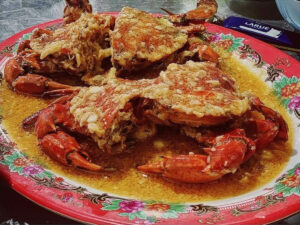
Cua Sốt Bơ Tỏi
This variation features crab sautéed with butter and garlic, offering a rich, aromatic flavor with a creamy texture
Aside from the many versions of cua rang me, I suggest taking a look at the many advantages and disadvantages of eating this flavorful dish.
How to Make Cua Rang Me?
Savoring cua rang me is easy, but it’s also interesting to unravel how Vietnamese materialize such a tasty flavor in the dish:
Step 1: Prepare the Crab
Clean, and remove innards before disassembling the crab into quarters.
Step 2: Make Tamarind Sauce
Combine tamarind juice, fish sauce, sugar, garlic, and chili to form a semi-thick blend.
Step 3: Cook the Crab
Sauté garlic and chili, then add the raw crab for cooking until they turn orange or red.
Step 4: Add Sauce to Crab
Pour sauce over crab, coat evenly, and cook until thick.
Step 5: Serve
Garnish with green onions or cilantro, and serve hot.
After exploring the steps to create the delectable cua rang me, you need to consider the benefits and drawbacks of indulging in this flavorful dish.
Pros and Cons of Eating Cua Rang Me
Before enjoying the attractive flavor of cua rang me, it’s wise for you to know about the benefits and drawbacks of eating this dish:
Pros
Cons
Don’t forget, cua rang me also raises many inquiries from that many that give you a deeper look into this mud crab specialty.



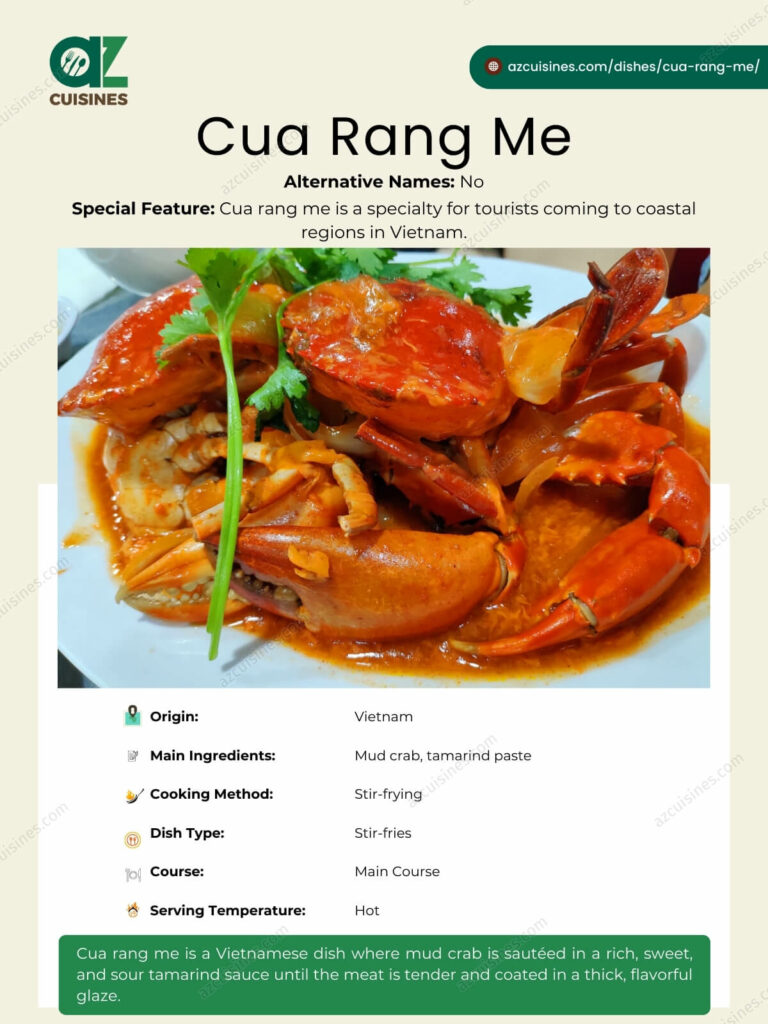
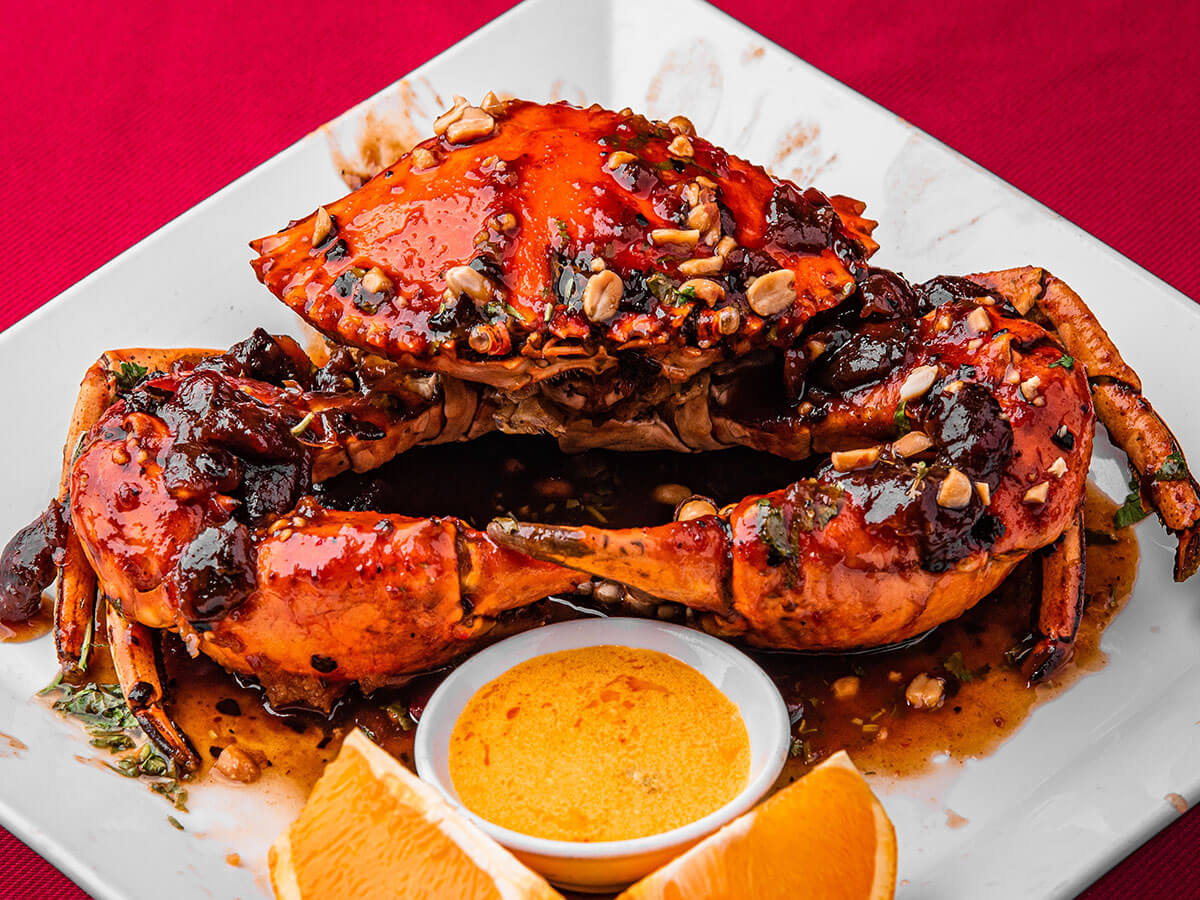

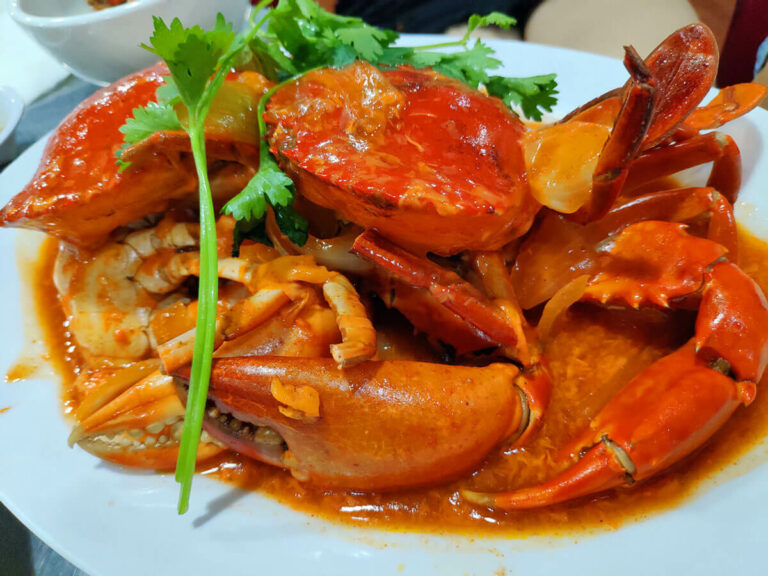

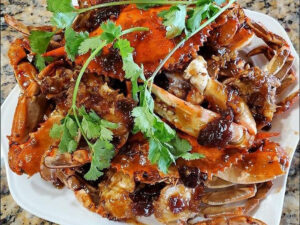
Truc Tran (Kris)
Senior Food Editor
Expertise
Home Cooking, Meal Planning, Recipe Development, Baking and Pastry, Food Editor, Cooking-video Maker, Vietnamese Food Evaluation Expert
Education
Truc Tran (Kris), an experienced food writer and editor, is great at exploring and describing global cuisines, from simple street food to fancy dining. In her writing, she skillfully mixes different flavors, cooking methods, and culinary traditions, showing the unique character of various cultures through their food and drinks. On azcuisines.com, Kris highlights her knowledge, especially in Asian cuisine and worldwide traditional dishes.